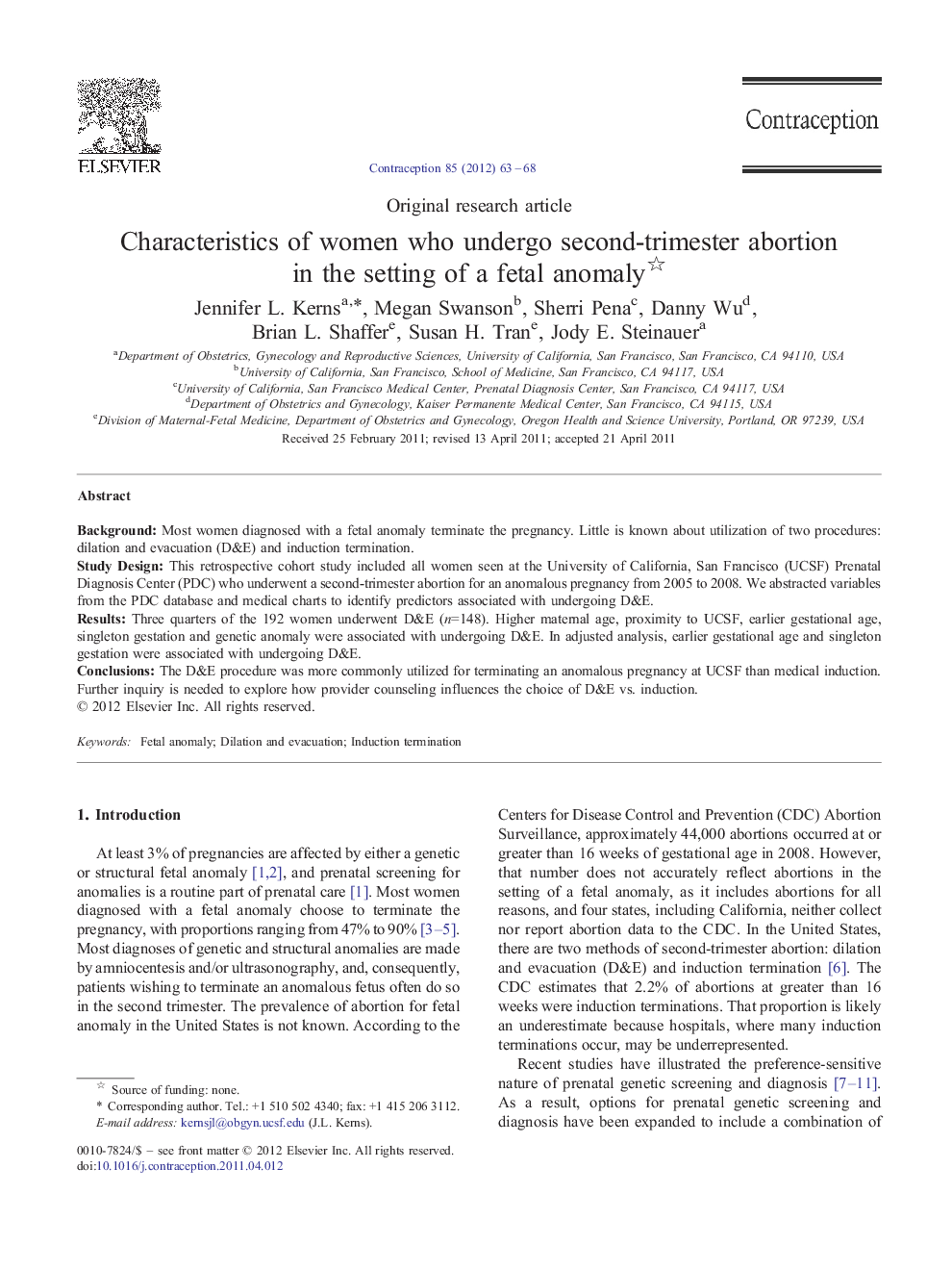| Article ID | Journal | Published Year | Pages | File Type |
|---|---|---|---|---|
| 3914464 | Contraception | 2012 | 6 Pages |
BackgroundMost women diagnosed with a fetal anomaly terminate the pregnancy. Little is known about utilization of two procedures: dilation and evacuation (D&E) and induction termination.Study DesignThis retrospective cohort study included all women seen at the University of California, San Francisco (UCSF) Prenatal Diagnosis Center (PDC) who underwent a second-trimester abortion for an anomalous pregnancy from 2005 to 2008. We abstracted variables from the PDC database and medical charts to identify predictors associated with undergoing D&E.ResultsThree quarters of the 192 women underwent D&E (n=148). Higher maternal age, proximity to UCSF, earlier gestational age, singleton gestation and genetic anomaly were associated with undergoing D&E. In adjusted analysis, earlier gestational age and singleton gestation were associated with undergoing D&E.ConclusionsThe D&E procedure was more commonly utilized for terminating an anomalous pregnancy at UCSF than medical induction. Further inquiry is needed to explore how provider counseling influences the choice of D&E vs. induction.
